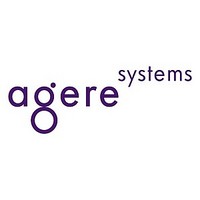T7256 Agere Systems, T7256 Datasheet - Page 36

T7256
Manufacturer Part Number
T7256
Description
(T7234 - T7256) Compliance
Manufacturer
Agere Systems
Datasheet
1.T7256.pdf
(60 pages)
Available stocks
Company
Part Number
Manufacturer
Quantity
Price
Company:
Part Number:
T72561ML
Manufacturer:
LUCENT
Quantity:
19
Company:
Part Number:
T7256A-ML
Manufacturer:
SAMSUNG
Quantity:
4 443
Part Number:
T7256ML2
Manufacturer:
LUCENT
Quantity:
20 000
Part Number:
T7256MLZ
Manufacturer:
LUCENT
Quantity:
20 000
T7234 Single-Chip NT1 (SCNT1) Euro-LITE Transceiver
Questions and Answers
U-Interface
A12: (continued)
It is desirable to express the return loss in terms of im-
pedance bounds, since an impedance measurement is
relatively simple to make. From the above equation, up-
per and lower bounds on impedance magnitude can be
derived as follows:
Upper bound (Z
Lower bound (Z
Note that the higher the minimum return loss require-
ment, the tighter the impedance limits will be around
Z
So, for the upper bound, solve for Z
For the lower bound, solve for Z
Plotting the above equations (using 135 for Z
ure 16 in T1.601 for the RL values) results in the graph
shown in Figure 15, which shows the return loss
expressed in terms of impedance upper and lower
bounds.
32
O
, and vice-versa.
Z
Z
Z
O
U
L
= lower impedance curve
= upper impedance curve
= return loss reference impedance = 135
Z
Z
U
U
=
=
RL (dB) = 20 log
RL (dB) = 20 log
Z
Z
(continued)
O
U
L
O
< Z
> Z
----------------------- -
10
10
10
---------------------- -
10
O
RL
------- -
RL
------- -
O
20
20
RL
------- -
RL
------- -
20
20
):
)
:
+
–
+
–
1
1
1
1
=
=
Z
Z
L
Z
------------------- -
Z
Z
------------------- -
Z
:
O
O
O
U
O
U
(continued)
+
–
U
+
–
1
------------------------- -
-------------------------- -
1
1 10
1
:
Z
Z
Z
Z
+
–
+
–
O
U
L
L
10
10
10
–
---------- -
–
---------- -
–
---------- -
–
---------- -
20
20
RL
RL
20
20
RL
RL
O
and Fig-
Q13: Why must secondary protection, such as a SGS-
A13: The purpose of the diode is to protect against
Thomson SM6T6V8CA protection diode, be
used?
metallic surges below the breakdown level of the
primary protector.
Such metallic surges can be coupled through the
transformer and could cause device damage if
the currents are high. The protector does not pro-
vide absolute protection for the device, but it
works in conjunction with the built-in protection
on the device leads.
The breakdown voltage level for secondary pro-
tection devices must be chosen to be above the
normal working voltage of the signal and typically
below the breakdown voltage level of the next
stage of protection. The SM6T6V8CA has a mini-
mum breakdown voltage level of 6.4 V and a
maximum breakdown voltage of 7.1 V.
The chip pins that the SM6T6V8CA protects are
pins 36 (HP), 31 (HN), 32 (LOP), and 35 (LON).
The 16.9
and 35, but pins 31 and 36 will be directly
exposed to the voltage across the SM6T6V8CA.
The on-chip protection on these pins consists of
output diodes and a pair of polysilicon resistors.
These pins have been thoroughly tested to
ensure that a 7.1 V level will not damage them;
therefore, no third level of protection is needed
between the SM6T6V8CA and the HP and HN
pins.
The SM6T6V8CA has a maximum reverse surge
voltage level of 10.5 V at 57 A. Sustained cur-
rents this large on the device side of the trans-
former are not a concern in this application.
Thus, there should never be more than 7.1 V
across the SM6T6V8CA, except for possibly an
ESD or lightning hit. In these cases, the T7234 is
able to withstand at least 1000 V (human-body
model) on its pins.
resistors will help to protect pins 32
Lucent Technologies Inc.
February 1998












